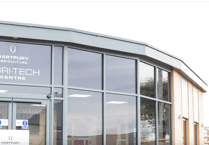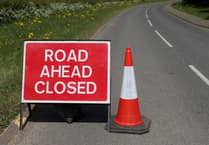FORMER racehorses can go on to have long lives after they are retired from the sport, a study by Hartpury University has found.
But the six-month Thoroughbred Census also found that around a third of owners have not updated their animal’s “passport” which should be changed within 30 days of new ownership.
The census was the first ever undertaken and was funded by The Racing Foundation which oversees distribution of funds to charitable causes in racing and the thoroughbred industry along with the Retraining of Racehorses group.
British Racing’s Horse Welfare Board, which released the results of the census said it gave invaluable information on the lives thoroughbreds lead after leaving the sport.
Details of 8,256 horses were submitted by their owners, 5,566 of which were previously unrecorded.
The results found that a third of retired racehorses are aged 15 years or older, and even more are still with their original owner post-racing.
A key aim of the Thoroughbred Census was to help bridge the gap between the current estimate of the British thoroughbred population and the reality.
The work by Hartpury University has put the former racehorse population at 33,600 and when the new census data are combined with information from the 13,000 members of the Retraining of Racehorses (RoR), group figures from equestrian associations around 80 per cent of former racers are covered.
Dr Jane Williams, Head of Research and Associate Professor at Hartpury University said:“Hartpury is committed to working with equestrian stakeholders to ensure we develop objective, evidence-informed approaches that provide the horses in our care with a good life. The Thoroughbred Census is a good example of this.
“We’re proud of Hartpury University’s contribution to this project and the increased knowledge and understanding we have gained which can drive forward positive developments in horse traceability that can support the wider UK and global equine industry.”
The study that almost two-thirds – 62.9 per cent – of the former racehorse population are aged between five and 14.
Roughly a third – 31.2 per cent – are aged 15 years or older which includes 739 thoroughbreds that are at least 20-years-old.
Around three-quarters – 74 per cent – are geldings, which is believed to be because mares and fillies often move from racing into stud as their second careers and are therefore not eligible to the census, and the most common reason owners stated their horse had left racing was due to poor performance or lack of aptitude for the sport.
The horses are used in activities such as dressage, showjumping and eventing with the majority are enjoyed for leisure riding, hacking and for other types of competition.
Other activities include therapy and endurance riding.
Ownership details are meticulously maintained in racing, data on racehorses drops significantly once their competitive days are over.
The 64 per cent of owners who had updated the details is well above the 20 per cent average of all equine disciplines,
Horse Welfare Board director Helena Flynn said: “It’s clear that many owners need better education around their responsibility to keep every horse’s ID document up to date. Moving forward, the Horse Welfare Board and Retraining of Racehorses will implement a communications plan to ensure owners of former racehorses are made aware, and reminded of, their responsibilities.”
The census was welcomed by former Sports Minister and independent member of the Horse Welfare Board Tracey Crouch.
She said: ““We are delighted that Britain’s inaugural Thoroughbred Census has enhanced our intelligence on the country’s Thoroughbred population. The report has also generated valuable recommendations for further improvements, some of which we will be pushing Government to support.”





Comments
This article has no comments yet. Be the first to leave a comment.